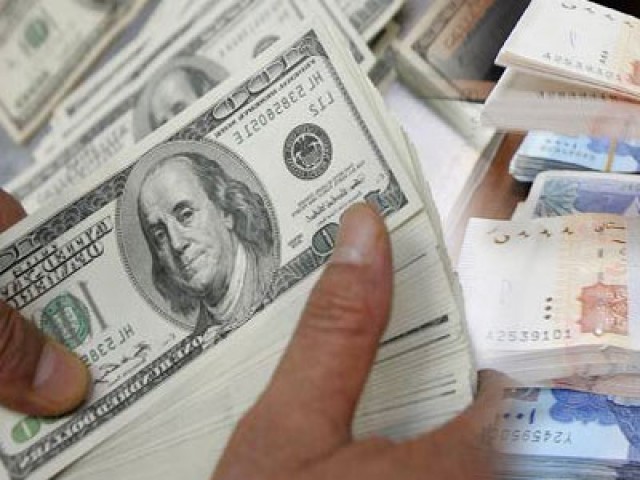
According to his estimates, external debt would reach a whopping $90 billion in the next four years and the country would need $20 billion a year just to meet its external financing requirements. Not only would this adversely impact macroeconomic sustainability, but would have a negative impact on growth as well.
Pakistan’s external debt set to grow to whopping $90b
Economists have argued that reasonable levels of external debt that help finance productive investment may enhance growth but beyond that, additional levels of indebtedness may cause to reduce it.
Countries have faced severe external debt crises and there have been instances of sovereign debt defaults since 1800. More recently, during the 1980s several countries faced high debt levels and repayments became impossible.
In a seminal paper by Carmen Reinhart and Kenneth Rogoff, the authors have attempted to count all the sovereign defaults from 1800 to early 2000s. They count more than 250 instances of sovereign defaults in 200 years — an average of more than one a year.
Various factors have been attributed to this phenomenon. Reversal of global capital flows, weak revenues and rising interest rates are some of the few reasons which can potentially cause this.
Pakistan’s external debt situation
Currently as of September 2015, Pakistan’s external debt stands at $66.5 billion.
External debt is primarily comprised of public debt (government debt, debt from IMF and foreign exchange liabilities), public sector enterprises (PSEs), banks, private sector debt and debt liabilities to direct investors.
Of this total external debt, nearly 84% is public debt. This debt is primarily long term in nature acquired from various multilateral organisations.
International Debt Statistics compiled by the World Bank has claimed that for 2014 almost 55% of external debt in the country is denominated in US dollars.
Moreover, the interest rate for all creditors is 4.3% with a maturity of 17 years. Grant element of this debt has been significantly reduced and stands at 37% which went as high as 66% in 2011.
Regionally, India has a much larger external debt position amounting to $482.9 billion.
Although Pakistan’s external debt is much smaller in magnitude compared to its neighbour, it has been consistently increasing.
It is significant to note that in a period of nine years from June 2006 to June 2015, the increase in external debt has been 75%.
Under the carpet? Govt applies creativity to measure debt pile
With limited increase in our export base and rising external debt stocks, the ratio of external debt to exports has been creeping up since 2012 and has reached 200% in 2014. Debt servicing to exports has also been rising over the years and stands at 19%in 2014.
Debt sustainability is key
Debt sustainability is a critical issue and one that is key to overall macroeconomic stability.
The joint World Bank-International Monetary Fund Debt sustainability framework was introduced in 2005 and is periodically reviewed. It was conducted most recently in 2012 with the next review being scheduled for 2016.
This framework for debt sustainability analysis has three broad policy objectives. One is to assess the current debt situation, its maturity structure, whether it has fixed or floating rates and by whom it is held.
Secondly, to identify vulnerabilities in the debt structure so that policy advice can be introduced before payment difficulties arise and lastly to examine the impact of alternative debt stabilising paths.
Disclosure on debt to all policymakers is key to making decisions that are critical for macroeconomic stability. Recently, the governor of the central bank of the country also hinted on this point when he said that the government should clarify regarding the composition of the much touted investment of China Pakistan Economic Corridor (CPEC) in terms of how much is equity and what proportion is debt.
Importance should be paid not on the magnitude but rather the efficiency of investment. Furthermore, our policymakers should pay serious attention towards debt sustainability before it balloons itself to be unmanageable. Pakistan’s debt to exports ratio of 200% is quite high.
IMF studies have pointed out that halving debt to exports ratio from about 200% of exports to about 100% would boost per capita growth by about 0.5-1%.
Lesser developing countries like Pakistan with weak institutions and policy structures face greater repayment issues and, therefore should pay great emphasis on the implementation of debt sustainability frameworks to avoid any future crises.
The writer is an economist and ex-central banker
Published in The Express Tribune, December 28th, 2015.
Like Business on Facebook, follow @TribuneBiz on Twitter to stay informed and join in the conversation.
1719660634-1/BeFunky-collage-nicole-(1)1719660634-1-405x300.webp)

1732276540-0/kim-(10)1732276540-0-165x106.webp)

1732274008-0/Ariana-Grande-and-Kristin-Chenoweth-(1)1732274008-0-165x106.webp)












COMMENTS (3)
Comments are moderated and generally will be posted if they are on-topic and not abusive.
For more information, please see our Comments FAQ